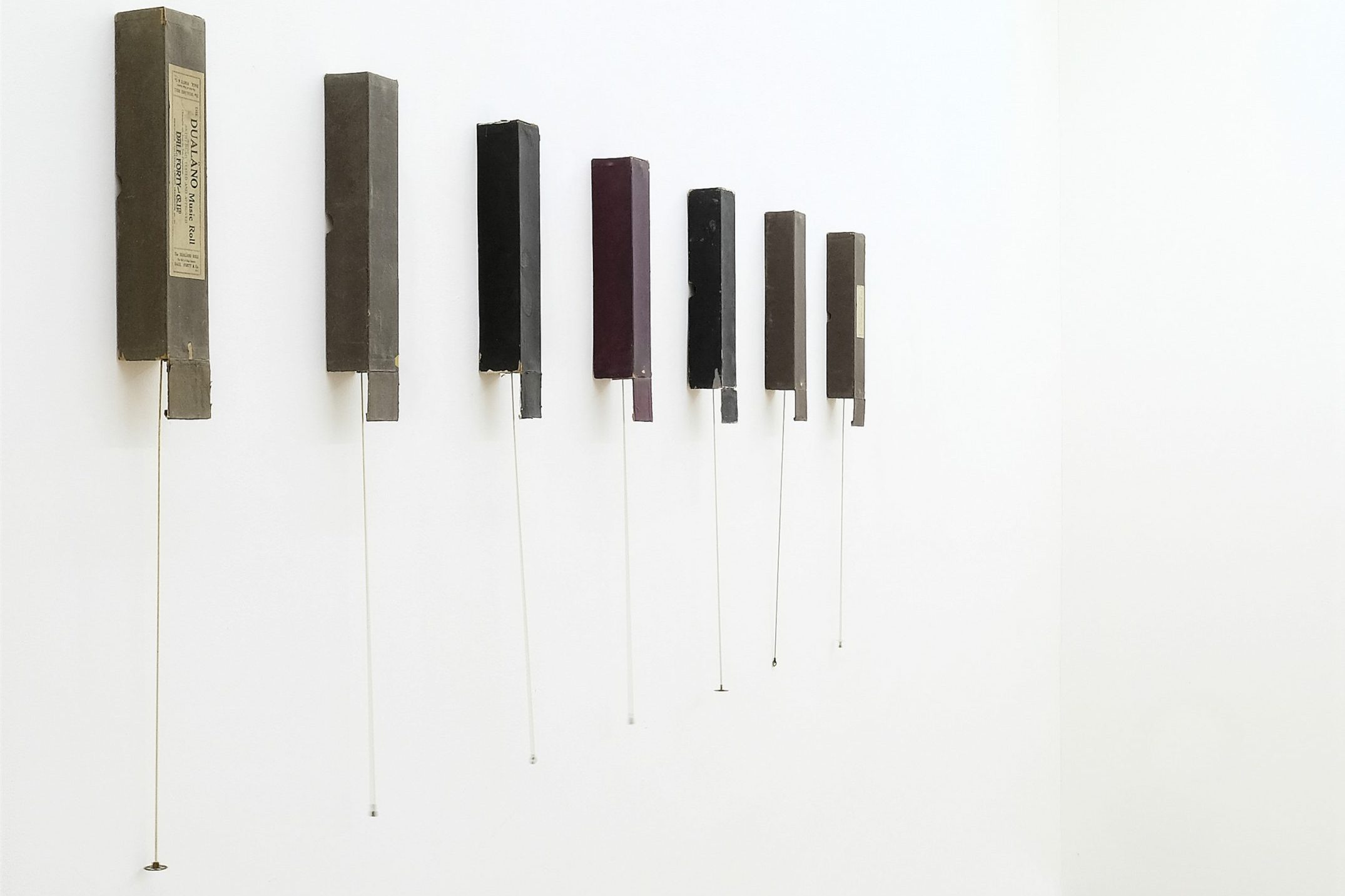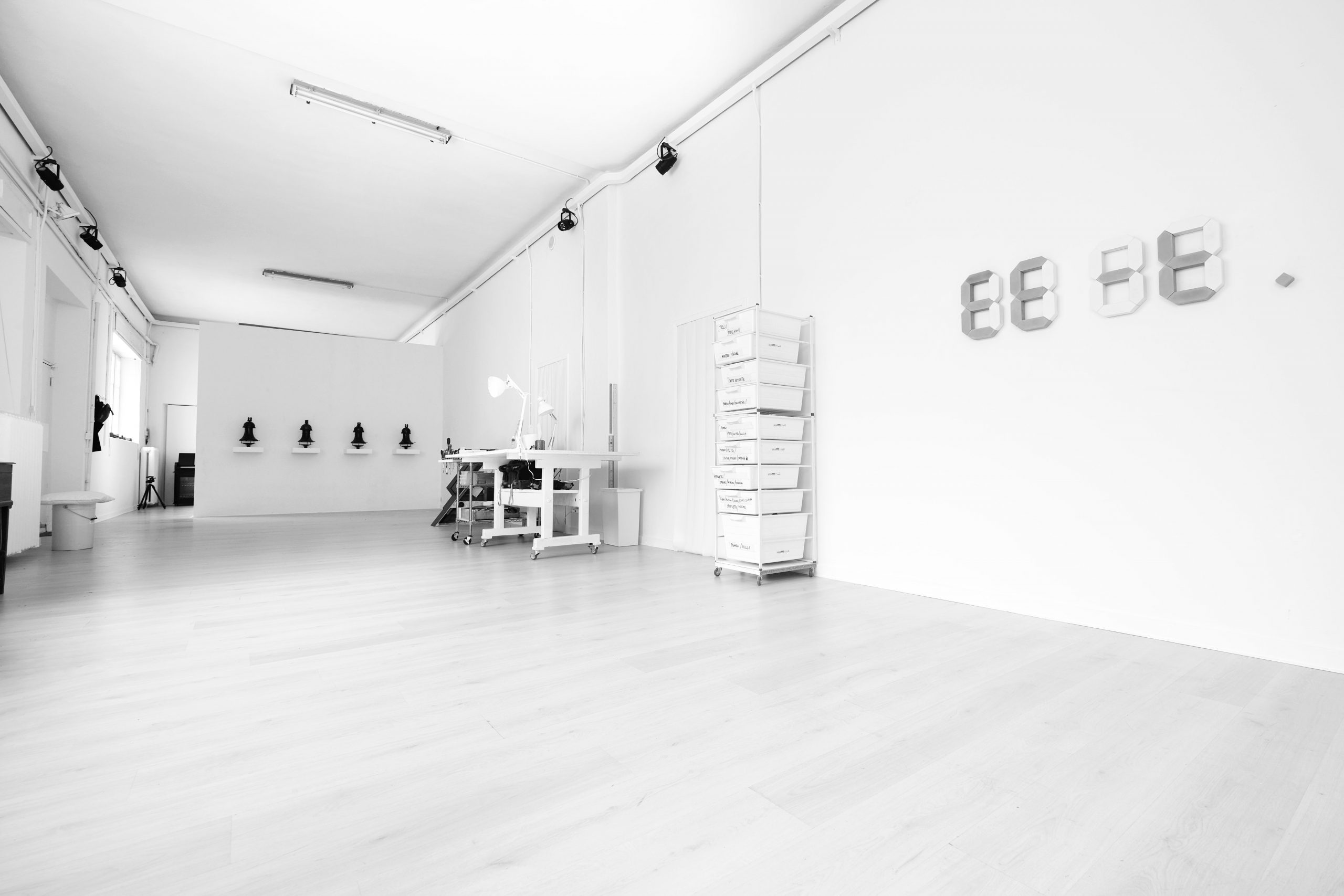
Through dissecting and remixing musical instruments and languages, you translate sound into image. This synthesis is not limited to a work of sound art, but is the result of a metalinguistic operation. As the critic Bettina della Casa says, your work could be defined as an ekphrasis for its ability to transpose music into a visual suggestion, creating an image that investigates the sound dimension. In your opinion, how can an abstract form such as a sound find translation in objects and images? Are they the point of departure and arrival, or is the process more nuanced?
Actually it was about defining a working process that, little by little, led to tridimensional, symbolic and expressive forms. We could say that sound always ‘touches’ us, even if it remains impalpable. My work focuses on the musical gesture, that precise meta-language that has been formed over the centuries to direct and give order to organised sound. By isolating what contributes to the formation of sound (sound waves, sound-absorbing and sound-reflecting materials, the conductor’s gesture, the keys of a piano), I reason each time on the work, which takes on substance by drawing on a detail, on a specific gear of the musical mechanism, on a material that resonates.
0,00002 Pascal (2020); Bodies (2016); Eject (2015)
What interests you about the vintage-looking objects that appear in several of your works? For example the piano in “ABCDEFG”, the cases in “Pendulum Music” or the victorian frames in “Stereofonia”.
The objects, after being collected and sorted, sometimes rest for months or years in my studio. The deposit of time adds up to that process of poetic reaction that I intend to trigger every time I complete a work. Time takes on a visual, tactile, chromatic dimension of its own, and helps to define the object itself. If sound develops around the horizontal axis of time, and crosses it from time to time, I like to think that even an object is not a fixed and unchangeable entity, and therefore can be in itself similar to a sound in constant movement.
THE ACT OF TOUCH - performance by Jacopo Mazzonelli and Tovel
How has your artistic research and worldview changed, if at all, during the pandemic? How did it affect the performative part of your work?
My artistic research continued during the pandemic, without any crucial stopping points. More than anything else, my perception of time has changed. Without fairs and following a drastic reduction in exhibitions, I decided to sort out a number of technical issues relating to the creation of my works, studying the materials better and resolving certain aspects relating to those specific works that produce sound. The impossibility of moving around freely made my “encounter” more difficult objects, as did the stimuli that naturally come from frequenting certain places.
What do you expect in the near future? What changes do you think will happen, or what would you like to see changing in the art system?
I believe that exhibitions should return to the centre of the debate. This may seem trivial or obvious, except for the fact that for several years now the focus has shifted more towards art fairs than gallery exhibitions, as has the attendance at artists’ studios. The model of my generation has, in some cases, come to be that of an artist with a laptop, without a studio in which to work. Everything seems fleeting, too fast. There is a lot of talk about how the art system will change after the pandemic, and lists of good intentions are compiled. From my point of view, nothing will change. Perhaps artists will realise that the bulimia of social media as a communication tool actually works like a fence: artists spy on other artists, and perhaps gallerists and collectors do the same. But the system is closed and does not produce authentic communication, except in the technical sense of the term. My father was an abstract artist in the 1960s; his group – Objective Abstraction – would meet in a bar or restaurant in the evening for discussions. This is no longer the case. There is hardly any reasoning and discussion about the works that an artist produces; instead, it is more just talking about where they are exhibited and who they are represented by. Perhaps meeting up again in the gallery or having dinner together in the artists’ studios would be a good start.







































